Introduction

According to the definition, human posture can be defined as the “carriage of the body as a whole, the attitude of the body, or the position of the limbs”. An ideal posture indicates proper body alignment whilst using the least energy expenditure to maintain a long term desired position.
Posture plays an important role which influences our life significantly. Journal articles have revealed that the posture can also effect our breathing and body fluid circulation.
Forward Head Posture
One of the common abnormal posture is called the Forward Head Posture (FHP), which involves hyper-extension of the upper cervical spine, flattening of lower cervical spine, and rounding of upper back and shoulders. If you want to find out who has a forward head posture, just look at the people standing in the train playing with their mobile.
Forward head posture can cause stress headaches, neck pain and stiffness, and upper back tightness.

Biomechanics
Biologically, our neck is the only structure supporting our skull, so when we’re looking downward, the load on cervical will be increased by 20-25% at every 15 degrees. In addition, our shoulder blade may rotate medially, upper thoracic curvature may increase and posterior neck and back muscles will become tighter than usual. Occasionally, temporomandibular joint symptoms can be caused by forward head posture because the tension of our mastication muscles (Pterygoid, Masseter, Temporalis) have increased.

Causes of bad posture
- Caused by occupation: long term forward or backward head position, bad sitting posture while using computer or screen, lack of activities.
- Caused by body structure: lumbar or pelvic asymmetry alignment.
- Caused by sleep: Sleeping on a thick or high pillow
- Caused by lifestyle: Lack of back muscle strength, texting
Symptoms related to posture involve:
- Back muscle ischaemia, pain and tightness
- Front muscle weakness, impairment
- Decreased neck mobility
- Decreased shoulder and arm range of motion
- TMJ pain and inflammation
- “Tension headache”
- thoracic kyphosis
- Potentially attribute to a slipped disc, or increase disc degeneration
Management for poor posture
- Soft tissue managements (stretching, dry needling, massage) – to decrease the muscle tension and pain
- Manual joint mobilisation or adjustment – to increase spine and joint mobility passively
- Exercise (whole body exercise eg, soccer, swimming) – to increase your spine and joints mobility actively
- Exercise (muscle strengthening) – increasing your muscle power to encourage natural alignment
- Postural analysis – to find out which parts of your body posture can be improved
- Lifestyle – Change your environment,
Generally, forward head posture is caused by poor head positioning and bad body posture, therefore by rectifying head and shoulder positioning, posture can be optimized. This is best encouraged and maintained by constantly reminding ourselves as we continue with our daily tasks: avoiding elongated computer time, elevating the screen, lightly squeezing out shoulders. The better we can remind ourselves of posture the better it becomes.
Written by Dr Wei ‘David’ Tai Osteopath
